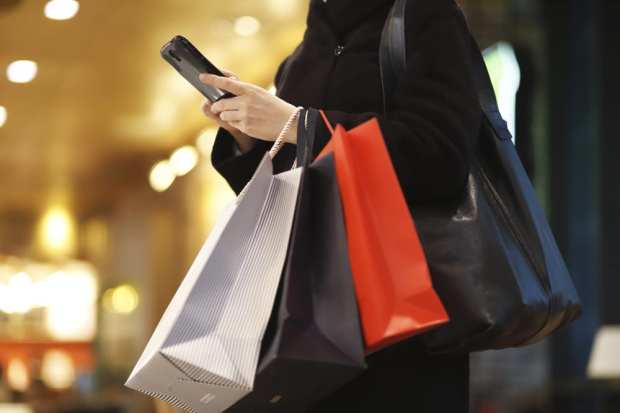Is Consumer Spending Heading Toward A Cliff?

Consumer spending has been on something of a roller-coaster ride in 2020 thus far – dropping into the basement in the spring, but showing signs of recovery over the summer. Things rebounded due to a slow-but-steady reopening of U.S. businesses, coupled with federal funds injected into the system via $1,200 stimulus checks and $600-a-week enhanced unemployment payments.
But now summer is over, and consumer spending is looking a whole lot hazier heading into the traditional holiday shopping season. Some experts forecast that consumers will open up their wallets – particularly younger ones – and will spend at elevated levels during the season, albeit mostly online. But not all forecasts for the future of consumer spending are quite so merry and bright.
According to a new study from the National Bureau of Economic Research (NBER) stimulus dollars did a lot to blunt the pandemic’s incredible impact on consumers. But once those dollars were spent and no new funds replaced them, consumers began feeling the pandemic’s full force and put the brakes on spending. The NBER estimates that could cut consumer spending by a very large amount in Q4.
How US Government Aid Impacts Consumer Spending
To determine how the government’s stimulus affects consumer spending, researchers combined two streams of information: government data on unemployment benefits and real-time credit card data. That created an overview of how a fall-off in one is correlated to a fall-off in the other.
The NBER found that as the government reduces unemployment benefits, consumer spending contracts. For instance, the study estimated that completely eliminating the Federal Pandemic Unemployment Compensation (FPUC) supplement (the extra unemployment benefits currently available) would lead to a 44 percent decline in local spending.
But the less that FPUC is reduced, the less the effect on spending. For example, in places where the FPUC has been reduced by $200 a month, spending rates still fall, but far less dramatically.
“We find that higher [income] replacement rates [through enhanced unemployment insurance] lead to significantly more consumer spending – even with increases in the unemployment rate – consistent with the goal of the fiscal stimulus,” the study noted.
A quick look at PYMNTS’ consumer survey data indicates that even early in the pandemic, the majority of consumers were living highly financially tenuous lives. As of early April, 60 percent of consumers surveyed reported living paycheck to paycheck.
Meanwhile, nearly half of those who had lost their jobs (44.5 percent) reported that they had $2,500 or less in savings to help get them through the pandemic period. That’s far less than necessary for the six months and counting that the pandemic has already lasted, let alone the additional 11 months that most consumers are anticipating at this point.
Faced with that reality – and no initial stimulus early in the pandemic – consumers began to drastically curtail their spending. For instance, they started eating out less, even when they could substitute takeout meals for dining at a restaurant.
They also began curtailing grocery shopping early on, with 76.5 percent of consumers reportedly shopping for groceries less often than they did before the pandemic. It was a similar story with regular shopping, which also fell off rapidly.
Some of that was due to a lack of shopping opportunities amid store closures. But according to PYMNTS data, an awful lot was just good old-fashioned belt-tightening by consumers.
And as the U.S. economy enters autumn, belt-tightening could return. After all, unemployment has dropped but is still widespread – and it remains unknown how much longer the pandemic will continue and whether additional government stimulus funds will become available to consumers.
The NBER’s data and PYMNTS’ recent surveys indicate that consumers might be gearing up for another spending slowdown – right at the time of year when many open up their wallets for holiday spending.
Known Unknowns
Of course, whether consumer spending will actually go over a cliff – and when it will happen, if it does – remains a lingering question mark.
Congress and the White House could, for example, get over partisan disagreements and hammer out another stimulus plan to inject more funds into the economy. In fact, Forbes recently noted that a big dip in consumer spending at exactly the wrong time of year might inspire lawmakers to do just that.
But if not, a decline in consumer spending could speed up pretty quickly. The research shows that federal money did much to slow the economy’s descent thus far – but without more of it, that could change.
